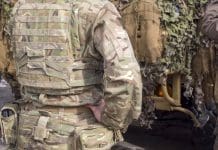Good safety leadership positively impacts a company’s ‘bottom-line’, as those companies with good safety performance are better all-round economic performers. This stems from [a] reduced incident rates; [b] improved working conditions and employee motivation; and [c] the positive influences on productivity and profitability.
In other words, good safety leaders also manage their operations profitably. This is often attributed to a company’s leadership driving the safety culture to achieve excellence. Such results show how important it is for all managers to demonstrate their safety leadership: from the most senior managers downward.
What is meant by Safety Leadership?
Good safety leaders develop ‘safe production is our number one priority’ as a core concept for all employees. Leaders stress that personal responsibility for safety is about everyone working safely and looking out for everyone they come into contact with, and always intervening when observing unsafe behaviours or conditions. They inspire others by showing they genuinely care about their people: this is done by raising the profile of the safety effort, and helping individuals to feel they are a part of something bigger than themselves. Good leaders challenge everyone to make a personal commitment to be the best they can be, facilitate people’s needs to work safely, make safety fun, and release people’s energy and talents to make it happen.
A successful safety leader also inspires others by creating and clearly articulating specific objectives that are both challenging and achievable, within an expected timeframe for achievement. Highlighting the benefits of improving safety performance, they consistently remind people why safety is important, and ask for others input to eliminate obstacles to safety performance. They also follow up with any necessary training and material resources. To maintain performance, they celebrate every safety success, create awareness of the benefits achieved, and most importantly of all, positively recognise every incident free day.
Behavioural Safety Leadership in Practice
Behavioural safety leadership is primarily concerned with what managers do in regard to safety, rather than what is said. Typically this means leaders are:
- Keeping their finger on the pulse of safety in their ‘sphere of influence’
- Observing and having safety conversations with people
- Supporting people in their various roles (e.g. behavioural safety observers, safety project administrators)
- Ensuring corrective actions are prioritised, attended to, and completed (usually within 30 days)
- Ensuring that information about their behavioural safety process and other safety efforts is being communicated to all (e.g. the results of observations, etc.)
Within a behaviour-based safety (BBS) process there are many practical ways managers can demonstrate their safety leadership. By and large, practical behavioural safety leadership means visibly supporting all of the company’s safety efforts. Specific examples are listed below, although the list is not exhaustive:
- Report corrective actions
- Ensure corrective actions are completed by their due date
- Regularly hold ‘one-on-one’ safety conversations with personnel
- Regularly conduct safety ‘walk rounds’ and recognise people when they are working safely, or coach those working unsafely
- Train personnel in hazard recognition and company safety rules
- Write policies, procedures, and/or safe work practices
- Keep people informed about safety issues and safety successes
- Detect, assess, and correct hazardous working condition
- Complete reports on all close-calls and incidents
- Regularly review safety performance, and provide feedback to all
Behavioural Safety Leadership Checklists
Within a BBS process, such behaviours as those listed above are used to develop ‘self-managed’ safety leadership checklists that contain safety leadership behaviours defined by the managers themselves. The checklists serve to remind people of their weekly safety leadership responsibilities and activities. They also provide data to verify that safety leadership efforts are being made consistently. Managers use these to record their safety leadership activities each and every week. The data is collected and entered into a database, so that an average site percentage safety leadership score can be calculated to ensure regular feedback can be provided to all, with improvements celebrated.
There is a close relationship between the levels of safety leadership displayed and that of employee’s safety behaviour. As the percentage of safety leadership increases, so does employee safety behaviour. As it diminishes, so do employee safety behaviours.
The safety leadership checklists tend to differ for different management layers (i.e. senior site management teams, line-managers, and supervisors), as typically, they exhibit slightly different sets of managerial safety leadership behaviours. For example, a senior manager may find it difficult to conduct a safety conversation once or twice a week, whereas a supervisor would have little difficulty doing so. In these instances, the senior manager may prefer to pick up the telephone once or twice a week and speak with one of his or her direct reports and ask about the BBS process or safety in general. In this way, the senior manager still has a safety conversation, therefore transmitting the message that safety is a core value.
Importantly, the checklists only contain safety leadership behaviours within the control of each layer of management. Where the management team is relatively small (e.g. less than ten) it may be better to develop one that everyone can use.
The safety leadership checklists are usually developed during 1-2 hour ‘managerial focus group’ exercises, so that the managers concerned can develop them according to the behaviours they know they can do regularly, each and every week. Usually these are divided into various support categories (e.g. BBS Support, Safety Interactions, Corrective Actions, etc.) with 2-3 behaviours within each.
Behavioural safety leadership walk-rounds
Based on the classic behavioural safety principles of observe, discuss, record, analyse, and act, behavioural safety walk-rounds are one of the most powerful ways safety leaders can control site safety, and demonstrate their ongoing safety leadership. For example, on an Oil & Gas facility build in Ireland, this approach reduced the site injury rate to zero within two weeks, with a workforce of 800 people. When the number of safety leadership walk-rounds reduced, as people thought safety was under control, the number of incidents began to rise again. Once re-introduced as intended (two observations per week, per manager), the incident rate dropped back to zero. This showed that the greater the number of safety leadership observations, the greater the impact, as the potentials for a serious injury or fatality (SIF) were reduced.
Subsequently, an observation card that specifically targets potential serious injuries and fatalities (SIF’s) was developed. This contained pre-defined categories of activity (Access and Egress, Mechanical Lifting Operations, Body Positioning, etc.,). This was named the PEER® process. It also included discussion categories to identify any underlying contributors (Poor Job Planning, Insufficient Manpower, Poor Communications, Ineffective Leadership, etc.,) leading to the unsafe behaviour or unsafe conditions. This type of categorisation proved useful, as it provided guidance on the kind of safety issues being experienced, and facilitated the provision of focused feedback. Rolled out in many companies around the world, in various sectors (e.g. aviation, construction, energy, manufacturing, oil & gas, shipping, smelting, and utilities) the resulting improvements have been sustainable.
A major strength of the PEER® behavioural safety leadership process is the speed of execution, as training is minimal (half-day classroom, half-day site practice), while exerting a rapid impact on incident rates. Before embarking on regular PEER® observation tours, managers are trained at a four hour session to identify permanent and temporary hazards related to their industry, as well as the various types of safety behaviour to look for during their walk rounds. They are also trained in communication and coaching skills to help them positively influence behaviour change during an observation, and win over people’s hearts and minds to the safety cause.
Trained managers then conduct regular safety observations, and have safety conversations with people during their normal daily duties twice a week or so. This presents every manager with regular opportunities to positively reinforce safe behaviour, or coach those behaving unsafely, while also discussing the underlying reasons for an unwanted behaviour. Cumulatively, this constant focus on safety behaviour leads to higher levels of safe behaviour, and dramatic reductions in all types of incidents, with positive spill-over effects on productivity and quality.
With the PEER® process, no checklists are carried during these observation tours, so people do not feel intimidated in any way. However, taking advantage of technology, after the safety interaction is complete, the results of the observations and discussions are recorded in the accompanying PEER® software. Tying the observations to risk assessment and root cause analysis, users are able to simply distinguish between those unsafe behaviours and conditions that had the potential to cause a minor injury or SIF. With powerful trending capabilities, the software allows users to monitor the build-up of the causes of potential SIFs so that appropriate corrective actions can be taken to eliminate them. The collated results are also used to provide real-time feedback on the overall safety leadership effort, which helps to identify any underlying issues detracting from good safety performance.
As with any behavioural safety process, it is extremely important to regularly analyse the observation data to highlight strengths and areas of opportunity.
This data analysis is used to facilitate any corrective and preventative actions, as well as to track progress. For example, the results can help to re-focus each safety leader’s ongoing observations and conversations on behaviours shown to be problematic. Similarly, they can be used to highlight and address those underlying contributors shown to be directing people’s unsafe behaviours. Eliminating just one of these can significantly reduce the number of potential SIFs. Widely disseminating feedback on a regular basis to site personnel about the observation results is a must: This can take place via weekly managerial meetings and toolbox talks, as well as using posters, newsletters, or any other medium that is convenient and effective.
Conclusion
Visible safety leadership is important for helping employees work safely. This article has discussed two proven, but related, strategies for enhancing safety leadership to ensure an impact on performance. The evidence shows that there is a close relationship between managerial safety leadership and employee safety behaviour. Safety Leadership can positively impact people’s safety behaviour by up to 86%, and reduce incidents by around 35%. Leaders who set their people up for success, facilitate their follower’s needs, and show they care, are very successful at positively impacting performance.
Dr Dominic Cooper CFIOSH CPsychol
CEO
BSMS Inc.
Tel: +1 (317) 736 8980
US: info@bsms-inc.com

















